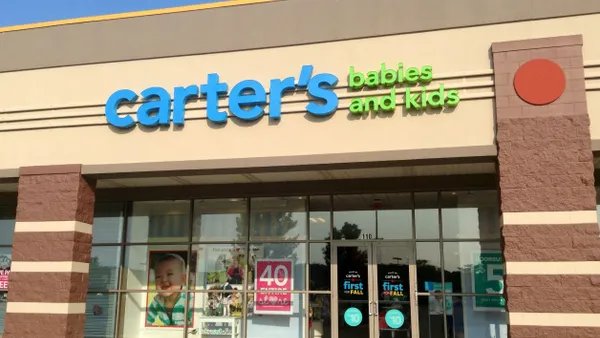Dive Brief:
- Ross Stores said this week it has added 40 new stores across 22 states in September and October, boosting its 2017 new store count to nearly 100 stores.
- Of the new stores, 30 were under the company’s Ross Dress for Less flagship brand and 10 were dd’s DISCOUNTS stores. The retailer said the most recent additions "complete the company’s store growth plans for fiscal 2017." The additions bring the retailer’s total footprint to more than 1,400 stores.
- Jim Fassio, president and chief development officer for Ross, said in a statement, "Looking ahead, we continue to believe there is plenty of opportunity to further expand our store base given consumers' ongoing focus on value, and remain confident that, over the long-term, Ross can grow to 2,000 locations and dd's can become a chain of 500 stores."
Dive Insight:
Off-price retail is riding a trajectory nearly inverse to that of department stores and many other apparel sellers. Consider, for example, that Ross is opening almost exactly as many stores this year as Macy’s plans to close. (Also consider that Macy's is quickly building out its own off-price model, Backstage.)
The sector as a whole is a giant asterisk in any talk of a retail "apocalypse." That said, while off-price is hot, it likely can’t keep growing at the same rate it has in recent years, especially as more and more of the stores fill the market.
In a recent report, analysts with Moody’s Investors Service said that they expect operating income among off-price retailers to grow 6.9% this year and 5.4% next, compared to 9.6% last year. That means a slow down for the sector — but it’s still pretty good, especially when compared with their full-price peers.
The off-price model, dominated by Ross, TJX Companies and Burlington, has proven resilient against e-commerce incursions. That’s in part due to their "treasure hunt" atmosphere, but also their respective value propositions.
"Off-price retailers continue to outperform other sectors of the U.S. retail industry largely because they offer the kind of lower-cost, higher-value products and shopping experience many consumers are looking for," Moody’s analyst Christina Boni wrote. "Off-price stores are far outstripping department stores, which in contrast are still struggling with outmoded formats and supply chains that can’t keep pace with customer demand."
In September, JPMorgan analysts wrote that the off-price sector is poised for further growth, thanks in part to solid fundamentals like a robust merchandise pipeline, a healthy consumer base and plenty of runway for brick-and-mortar expansion. More specifically, the analysts said the major players in the space offered products at prices 20% to 60% below both Amazon and full-line department stores.
That presents a growth opportunity for off-price sellers worth $18 billion to $19 billion in incremental sales by 2021, according to the JPMorgan analysts, led by Matthew Boss. They also pointed out that off-price growth comes primarily at the expense of department stores, which combined have lost $25 billion in sales since 2011 and are on pace to lose another $22 billion sales over the next five years, the analysts wrote.
Analysts also noted that even a 2,500-store target for Ross’ footprint growth was "likely conservative." Meaning, there’s plenty more to come after this recent spat of store building.
The retailer said in August that its net earnings for the first half of the year, at $638 million, were up 11.3% compared to the year-ago period. Sales in the period rose 7% to $6.7 billion, and same-store sales rose 4% compared to the 3% growth in the first half of last year. Wolfe Research analyst Adrienne Yih wrote at the time, in a report emailed to Retail Dive, that Ross "continues to prove the resilience of the off-price model as wells as the ability to drive sales with in-season chase to drive upside."















